Aground Zero Review
Aground Zero is a futuristic 3D base-builder with colony simulator elements in a blocky universe. Developed and published by Fancy Fish Games, the game runs well on Linux and Steam Deck.
When I was offered the review, I wondered how Aground Zero would stand its ground with many games exploring the mechanics of factory creation, blocky worlds or spacial adventures. So let’s check together see what the game has to offer.
Background
Earth is now submerged, you wake up from a cryogenic sleep, luckily enough, you are safe in one of the few underground pockets of air.
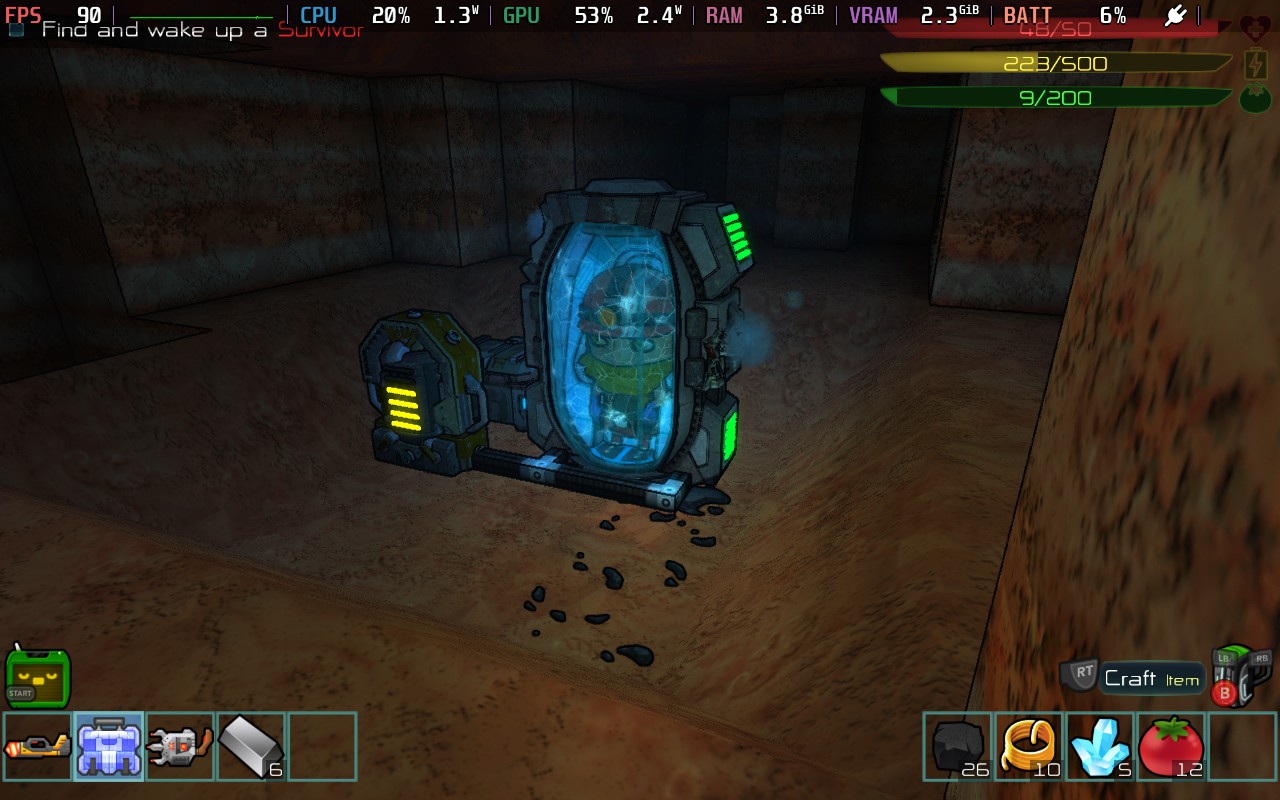
Now it is time to survive, find other survivors and leave earth for good.

The world is blocky, blocks of different styles, from caves, to city, to beaches. Blocks have different strength and some of them contain materials you can use to start your base.
The rest of the world is a different style that does not follow a blocky structure, and while within the block constraints of size, they are much more detailed, like the futuristic structures you build, plants, enemies and the survivors.
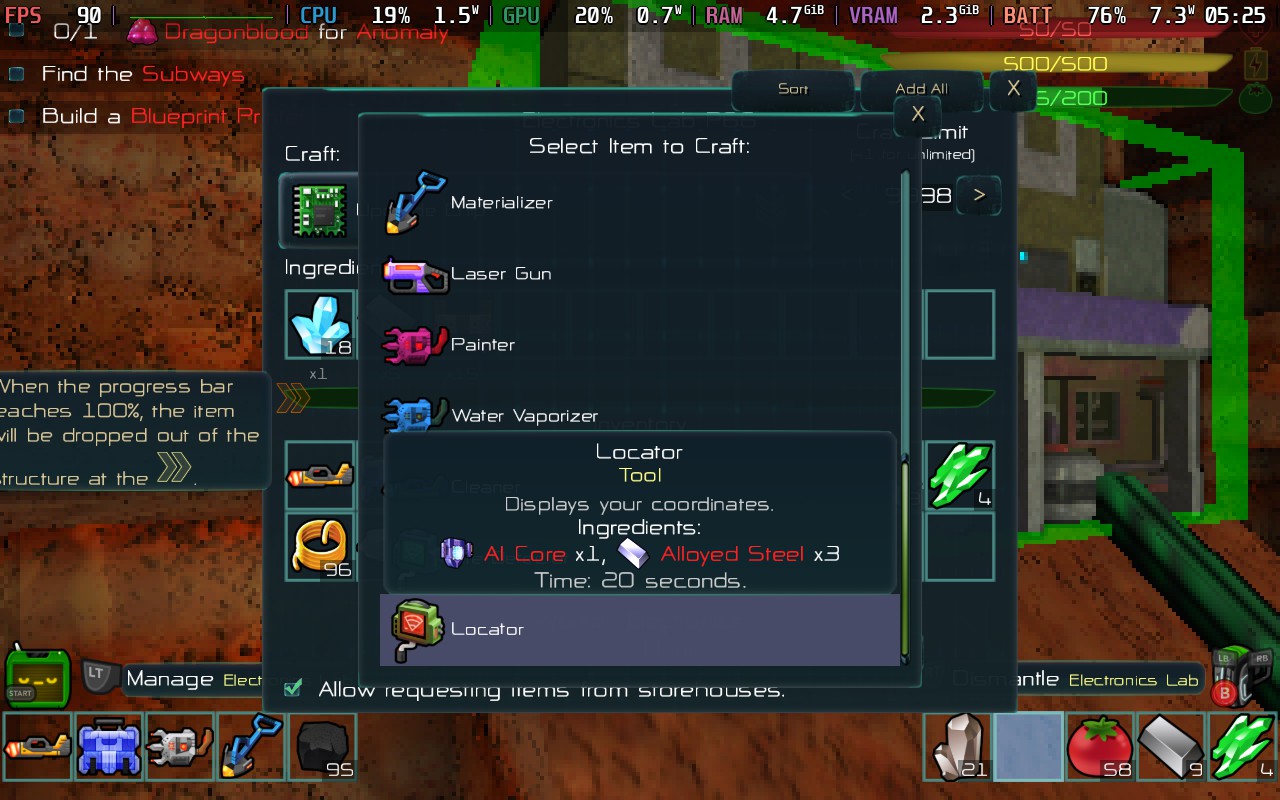
You start with a set of tools to help with your adventure and base building, one to destroy blocks - that you can upgrade to destroy harder blocks, a tool to construct things for your base - you will unlock new blueprints during the game, a tool to convert raw materials into products you can use to build other stuff, over the game you will also unlock new tools, like a weapon, or resource trackers.
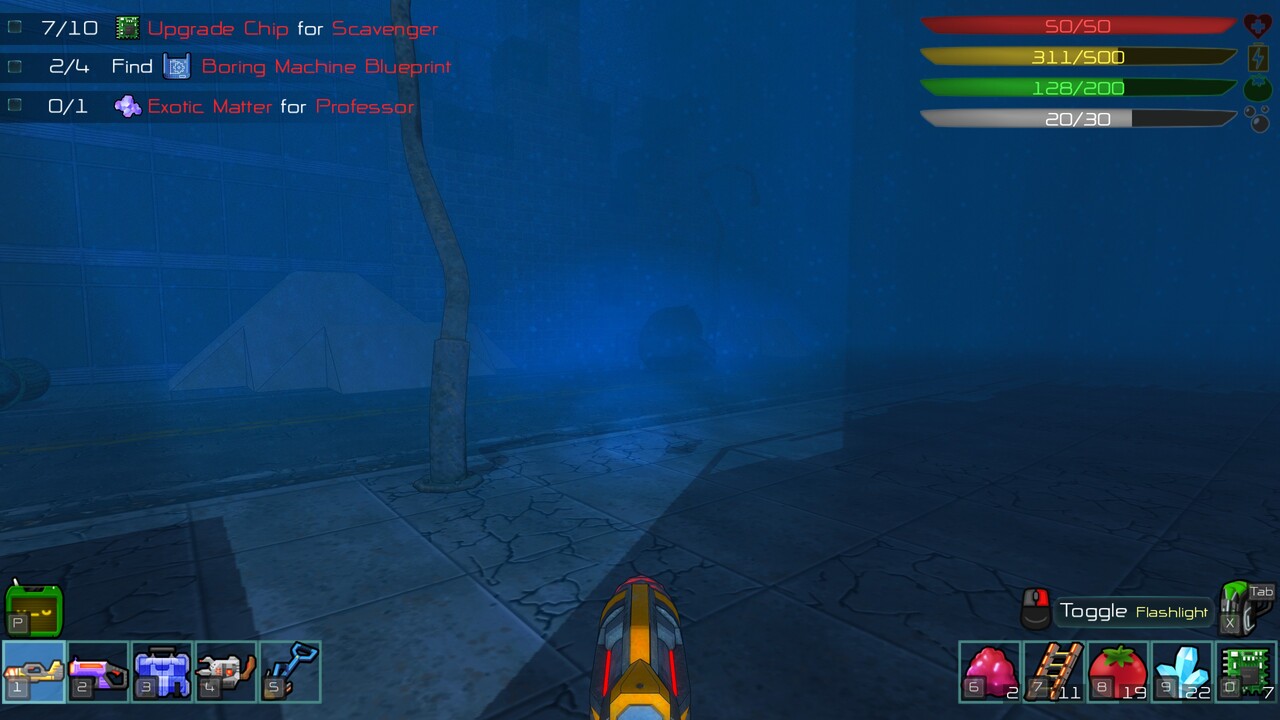
While you are free to do what you please, the geography of the level design follows the classic game design progress of introducing new mechanics as you need them. You start at a point that you can use your tools to dig and build a base, as you dig up you discover new elements of the game, new blocks and equipment, you get to the flooded surface of earth, and you are introduced to the oxygen levels of your suit. The quest progress also helps to steer you to the right direction when overcoming obstacles.
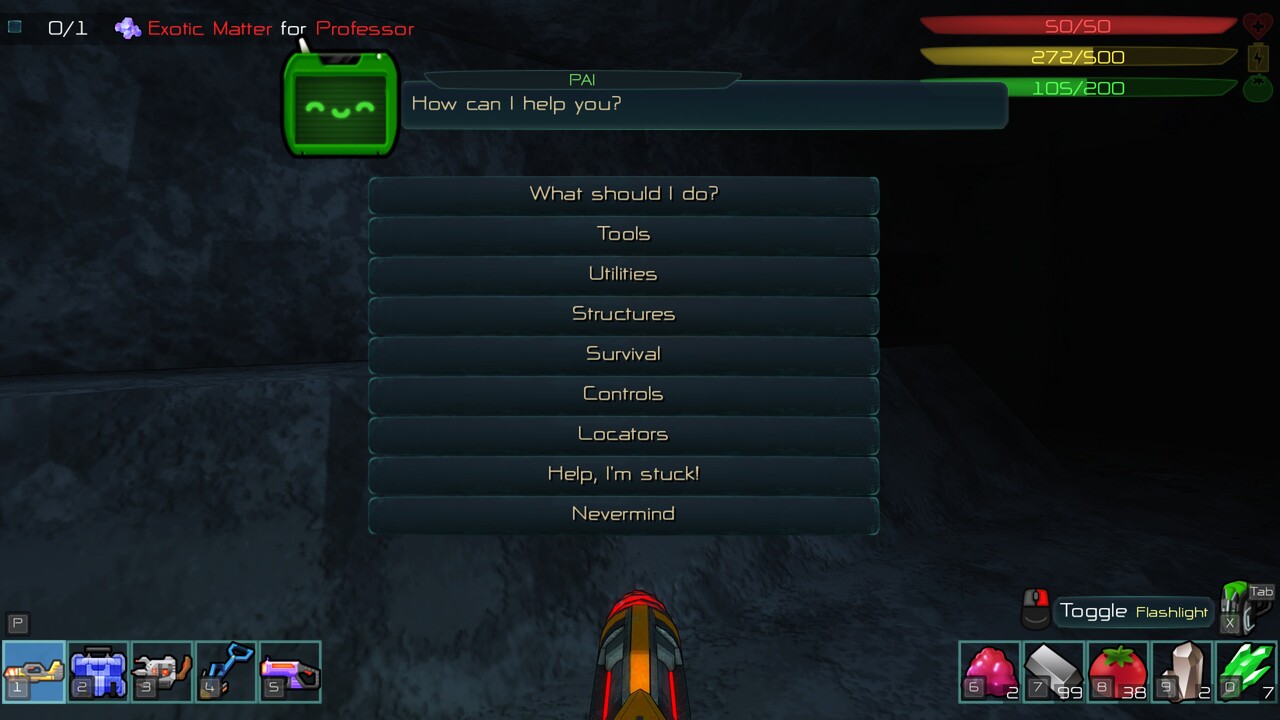
I also liked this feature on the pause menu, where you can ask your robot assistant what to do next, very useful when I was not sure what to do, or just coming back to the game after a long pause. Being able to pause, save and quit anywhere was also great.
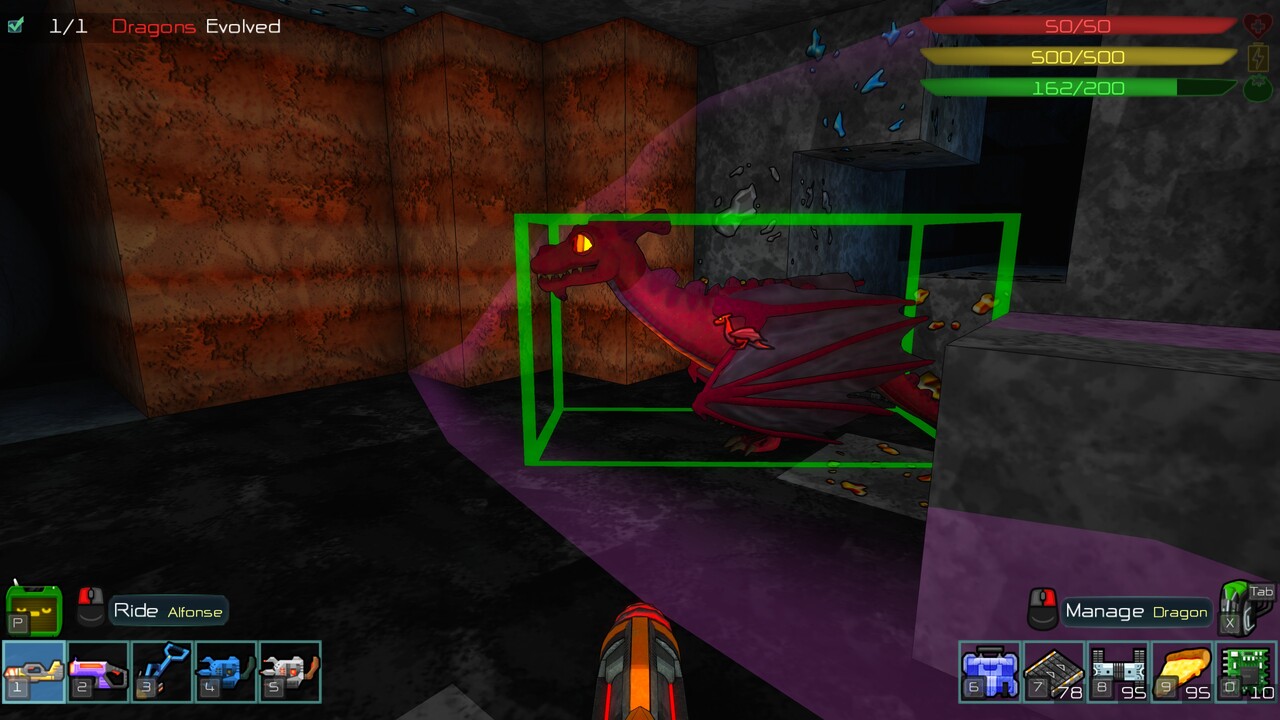
The game has two quest lines, the main one focuses on science, the other on fantasy and spellcrafting. Science is the bread and butter, fantasy will let you ride dragons and cast fireballs. Pursuing both will help you during the game, but if you intend to finish both, you need to do the science first, the game will warn you when you get to the point of no return of the fantasy questline.
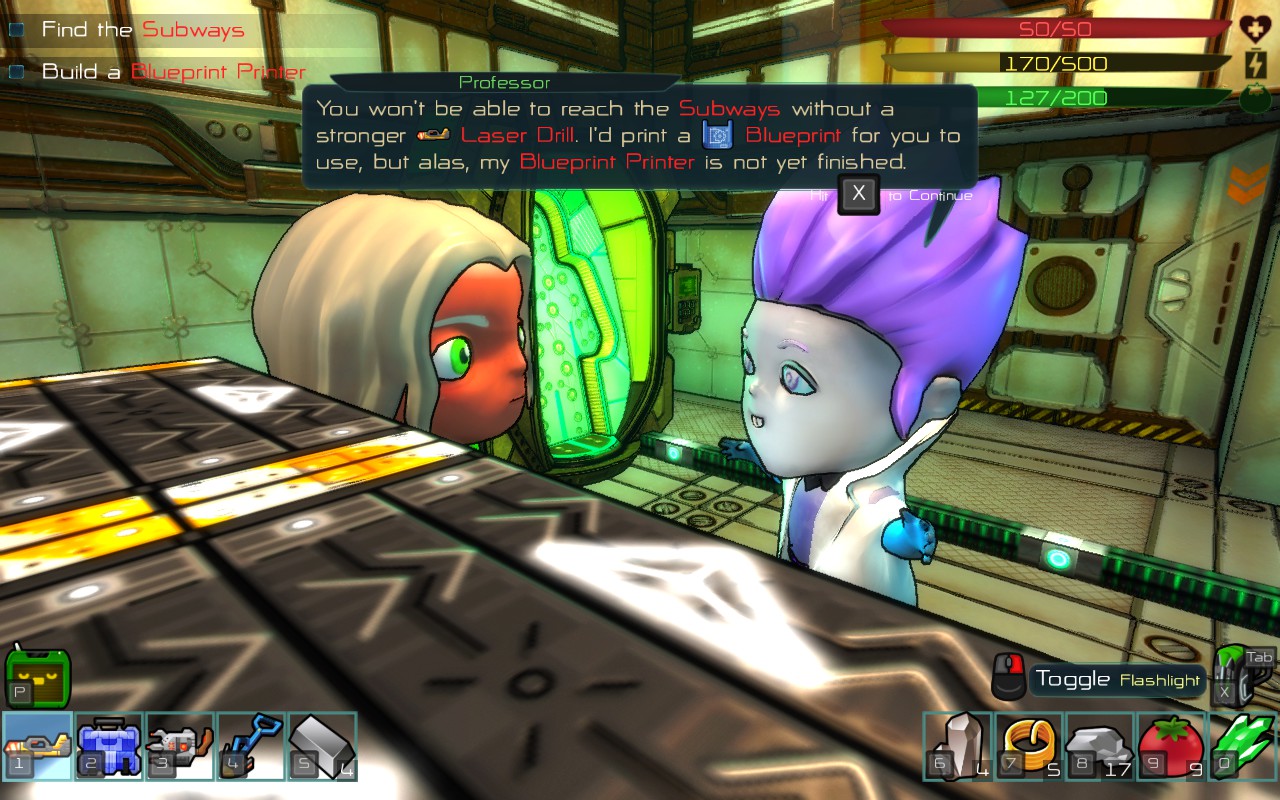
I found the base building quite enjoyable. It is basic and straightforward. Sometimes I would just stop the quest progress to tidy up and improve my production lines.
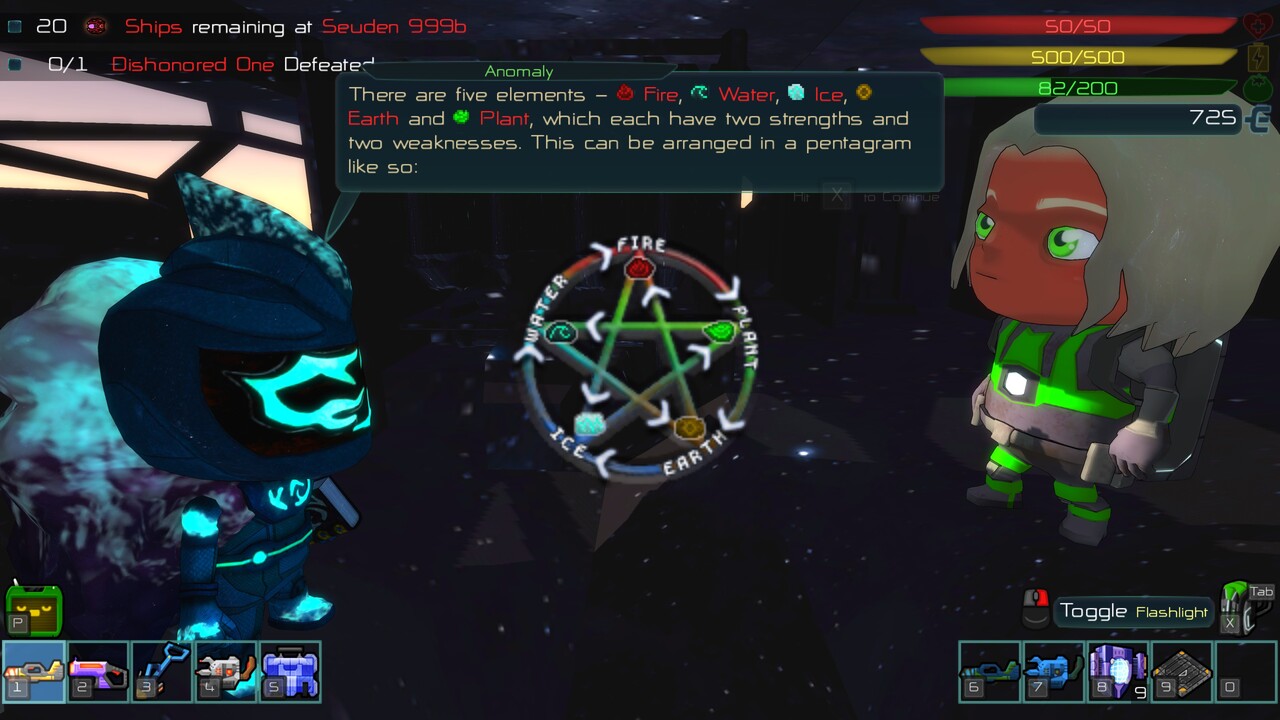
Buildings that consume energy needs to be connected to a generator, you don’t need cables, just placing buildings side by side will be enough to transfer energy. Conveyor belts and ladders also transmit electricity, making the task of tidying up your base easier. The same goes for production output, as long as the exit point is towards the building it has to go, you do not need conveyor belts. It would make my life a lot easier if I could flip the construction, but I could only rotate it.
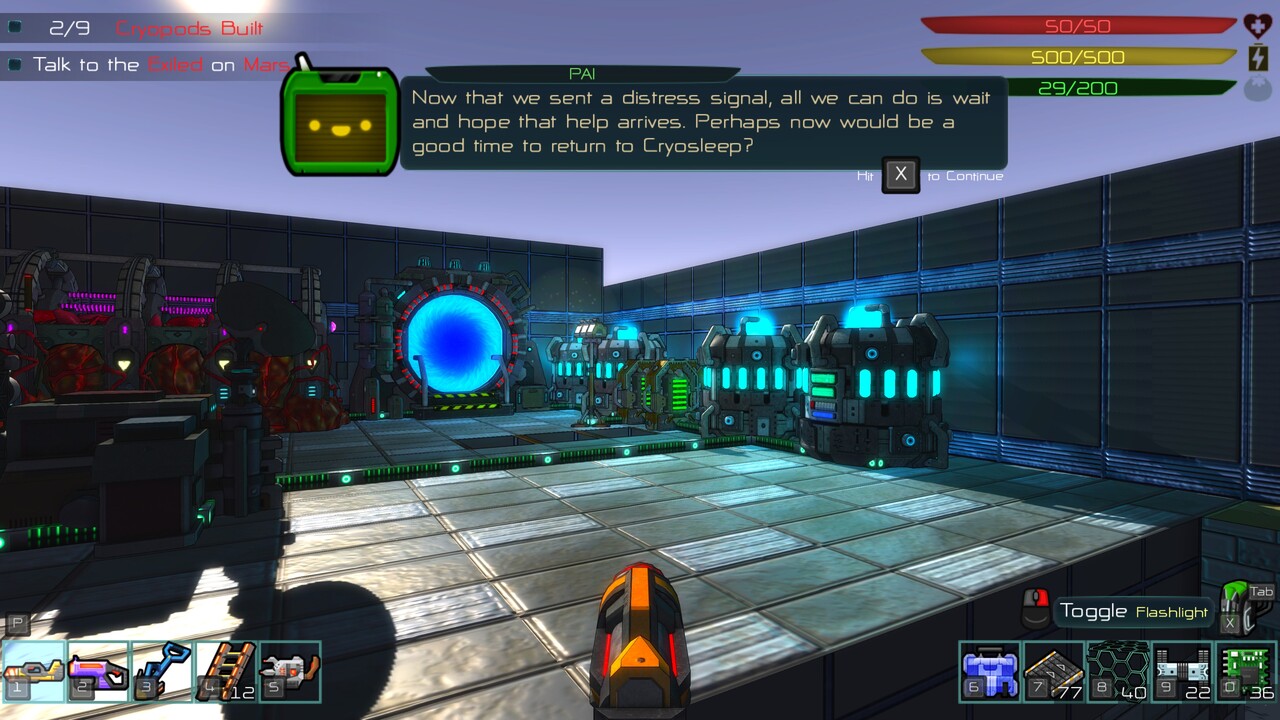
There are 2 reasons to have production in your base: to feed your colonist/survivors, and to create things you need to proceed in the questline.
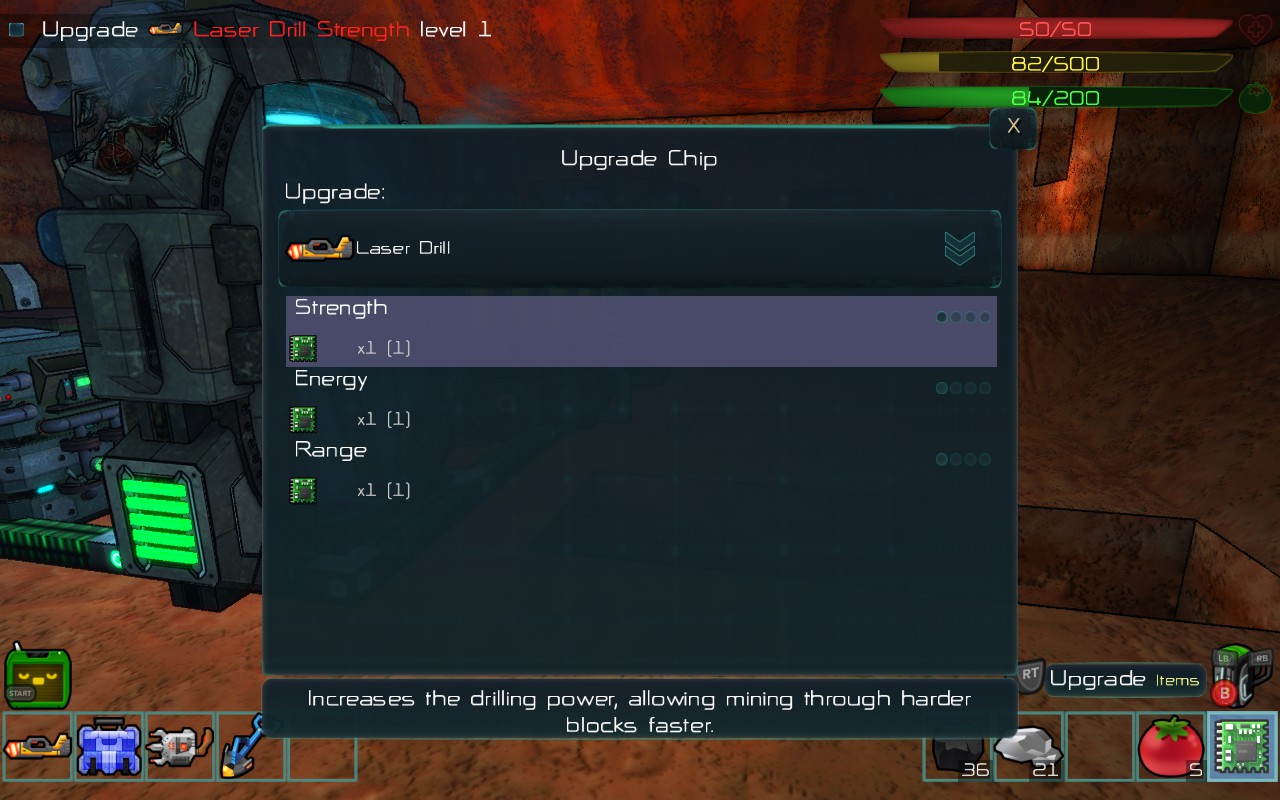
Feeding was interesting, for most of the game, I just created a hydroponic building attached to the survivors bunkers producing tomatoes. And I entirely ignored everything else, unless I needed to progress a quest line.
First I did not realize I could produce other foods, you start with tomatoes, wheat and sugar. You cannot do anything with the latter 2, and their nutritional value is minimal compared with tomatoes.
Second, I did not realize I could build other stuff, at some point I talked to a guy who claimed to have invented a plant that produced meat, but I had no thought or need to check the hydroponics for new recipes.
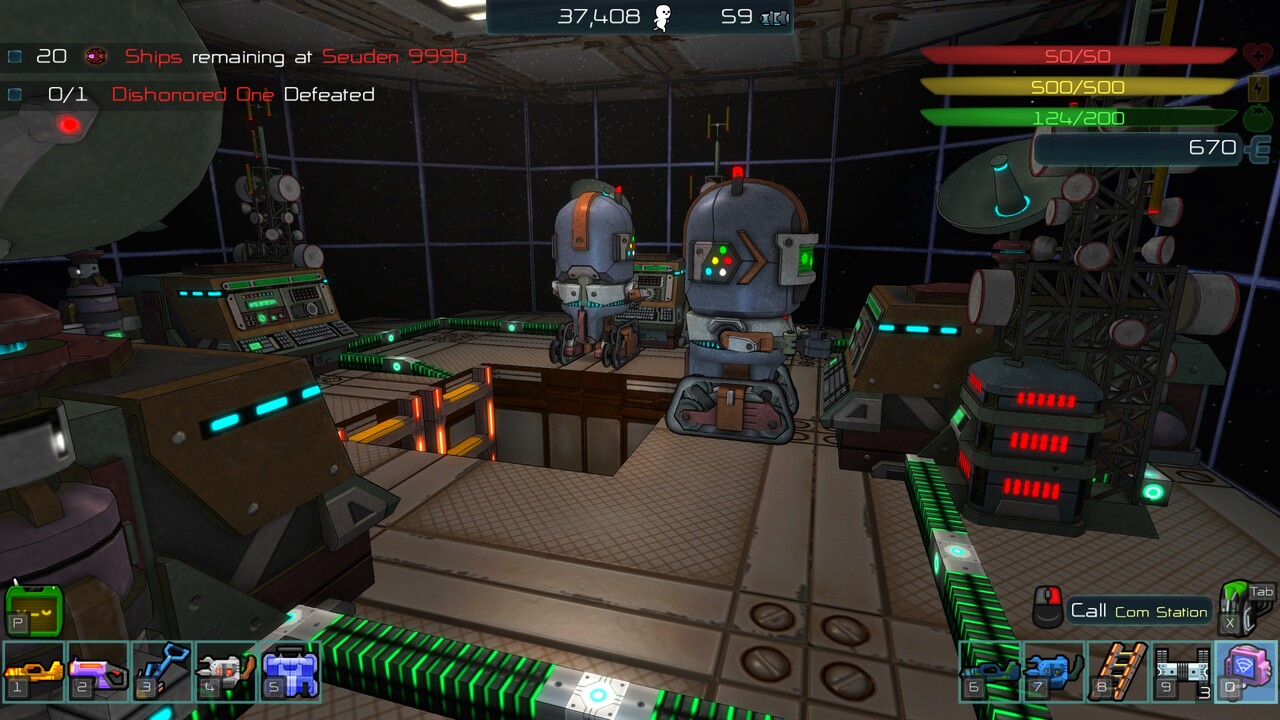
Third, the amount of time, space and energy wasted to build other foods is insane. For a cheeseburger, you will need 4 kitchens and 4 workers, each for: transforming milk into cheese, wheat into bread, ingredients into hamburger and adding cheese to the hamburger.
Last, there is no benefit to those fancy foods, you can fill your hunger meter by eating a cheeseburger, but you can also stuff yourself with multiple tomatoes, and you can carry 99 items in each block space of your backpack.
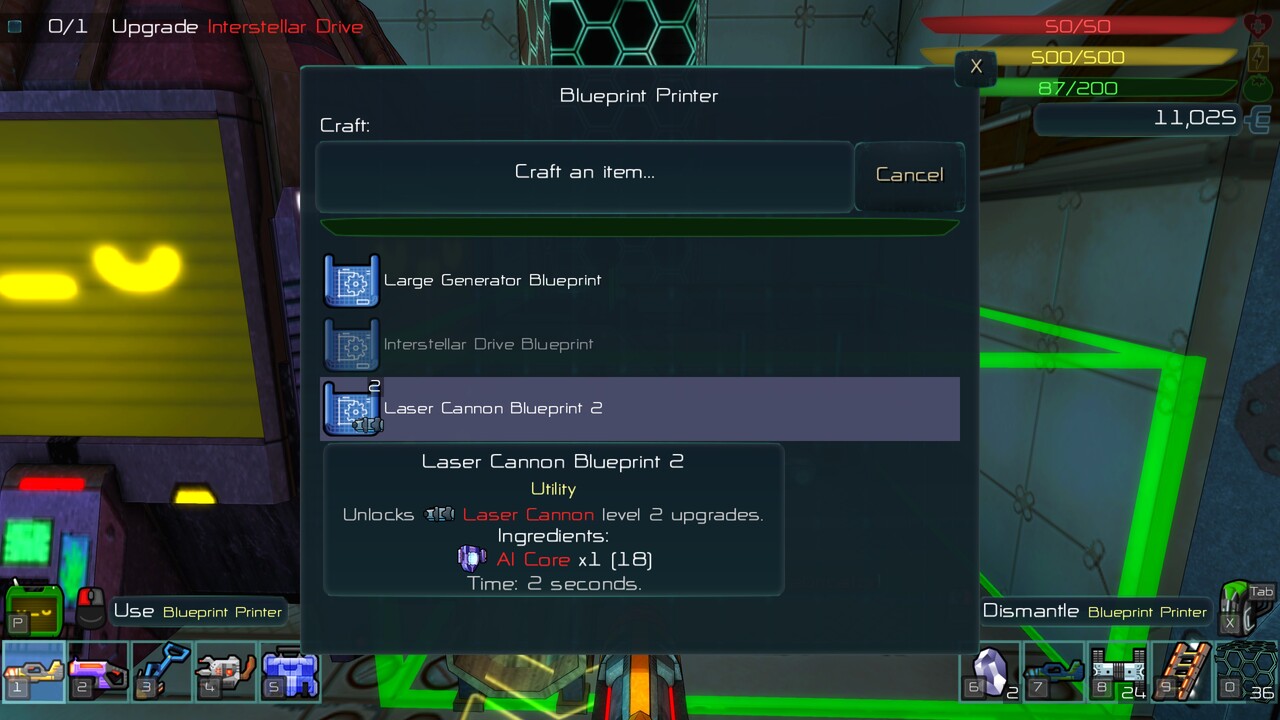
Producing things is very useful, you can get some stuff by digging yourself, but by setting up some mines and production lines, you can focus on exploring and doing quests rather than hunting for materials around. The mines use almost no space, and can harvest any raw material you have found a “blueprint”.
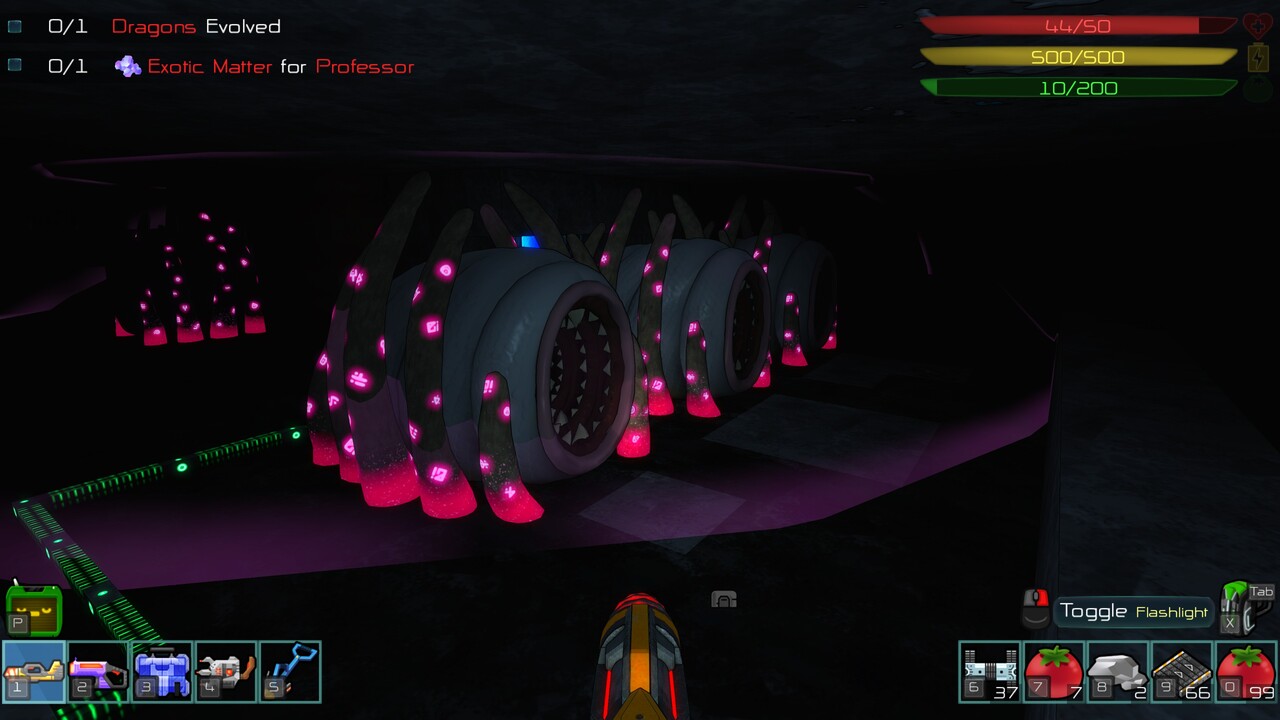
While the game needed a substantial number of things to progress, Aground Zeroes never felt grindy. You have the production line in the base going own without your input, I spent most of my time exploring or tweaking the base to my liking than hunting for items. In the cases I did not have an assembly line yet, like the cheeseburger, tweaking the factory felt more like a creative endeavour than grinding, once done I did not have to wait longer because the number requested was fair.
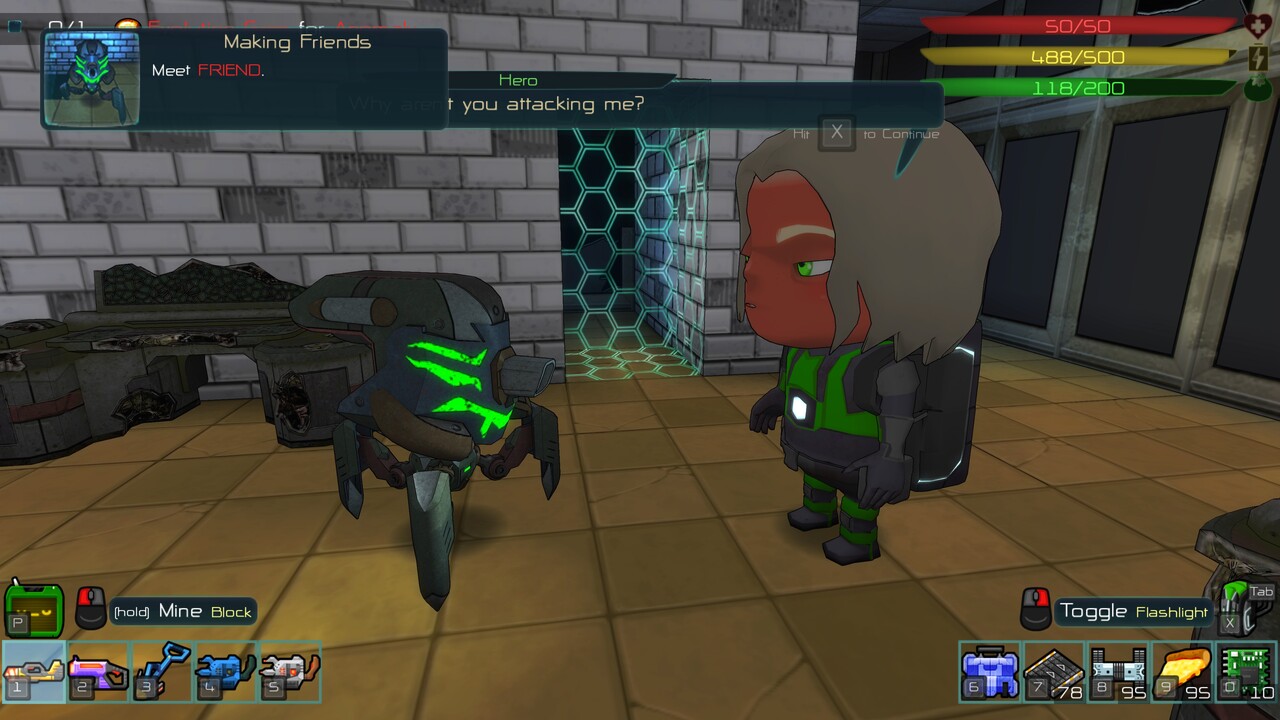
There are some enemies you need to be careful with, and many ways to deal with them, weapons, magic and sentry. You can equip weapons on your colonists, and they will shoot lasers at any enemy that approaches.
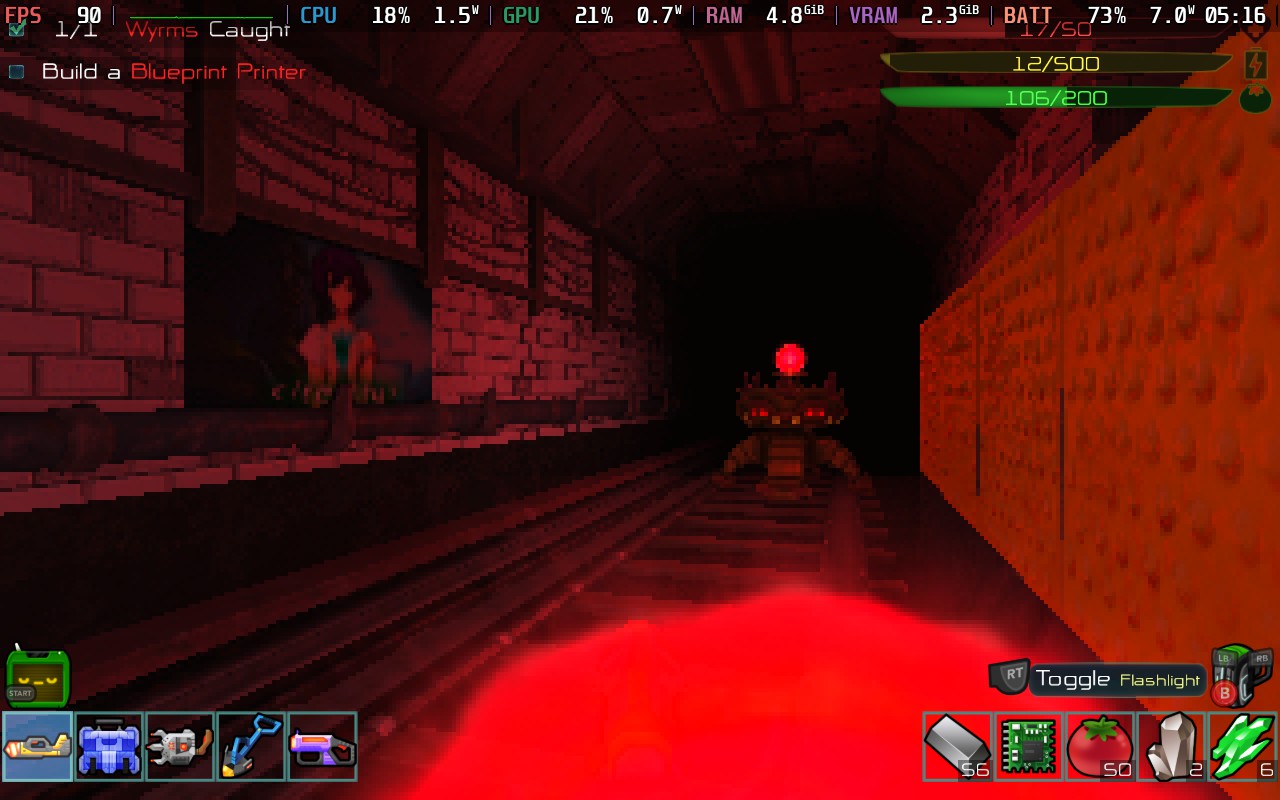
The description of the sentry says it is to protect your base, but there was never an invasion, the enemies respect boundaries as long as you don’t go digging willy-nilly. But the build was not that useless, I installed several of them close to the robot enemies spawn points to farm their resources.
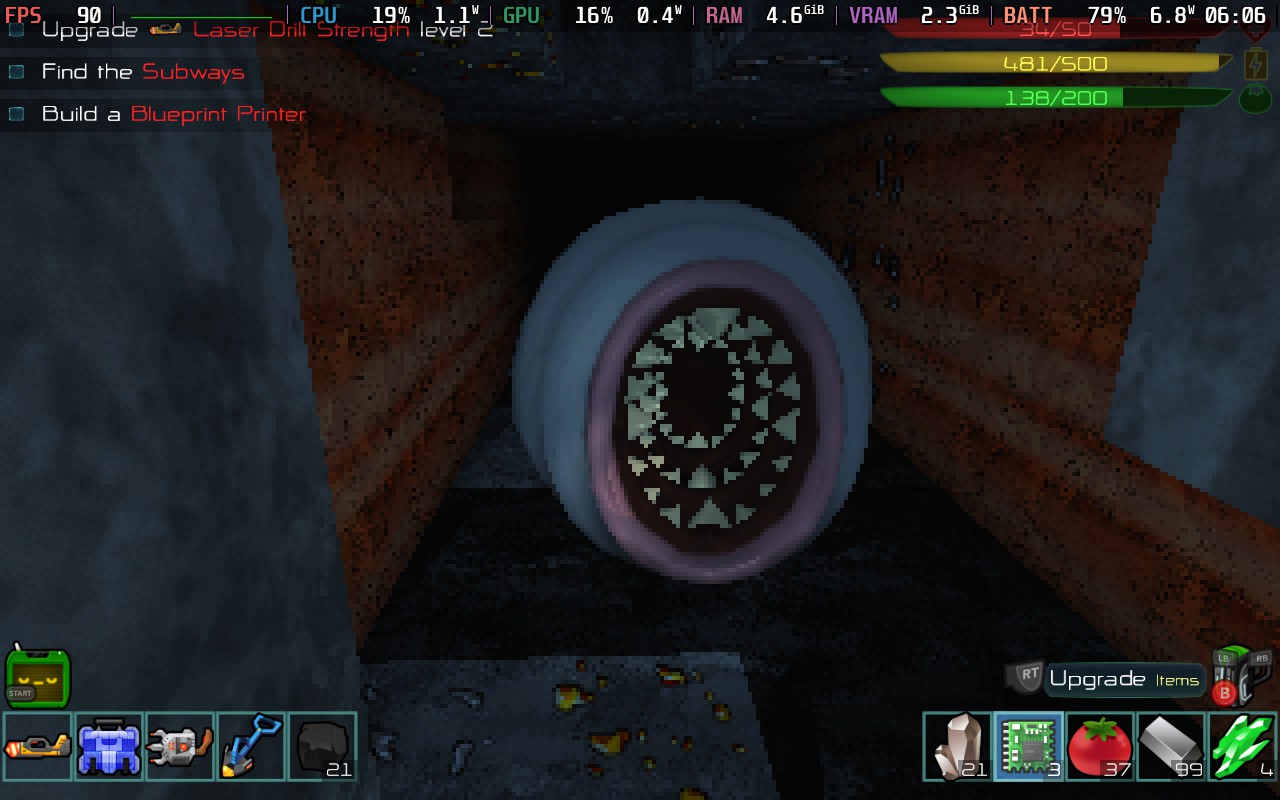
The game started losing its appeal to me when I left Earth’s surface. First you unlock other planets in the solar system, then you can explore other systems, but there was little reason to do so.
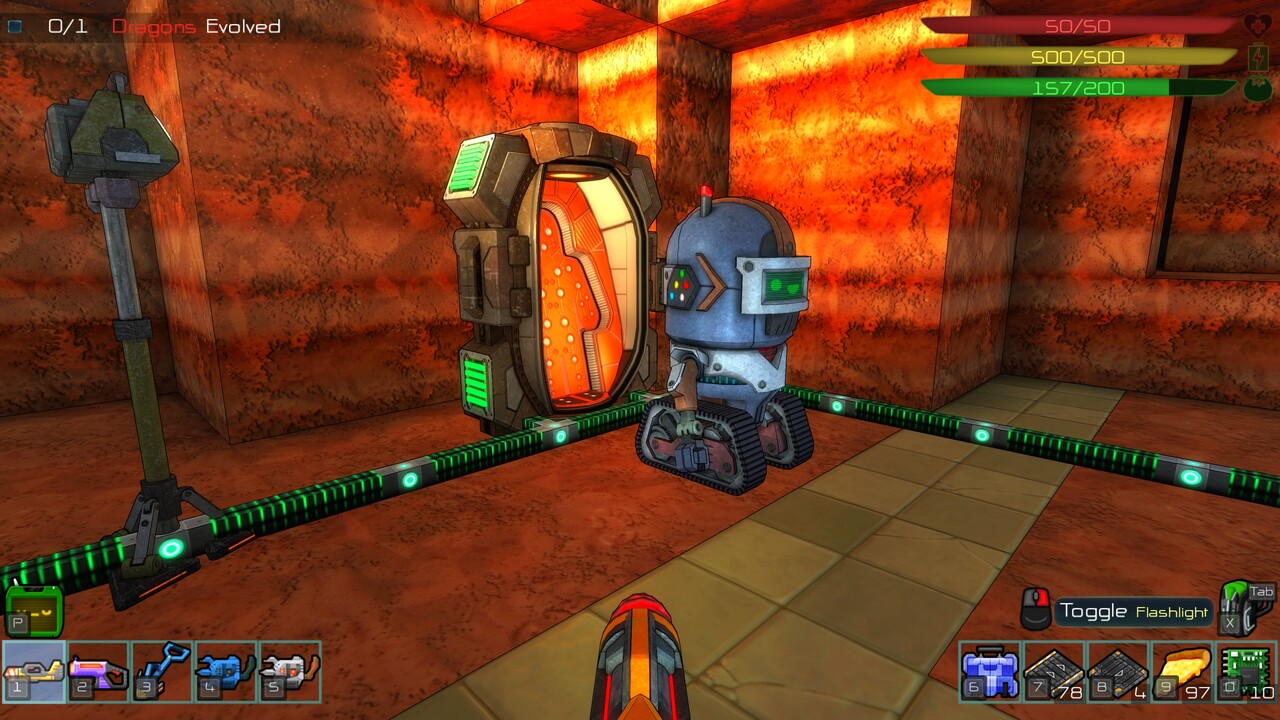
At that point, you might have a really nice production going on Earth, the raw materials in other places are the same, there is a limit on the number of workers available - later you unlock robots, but they have a cap of 30 units.
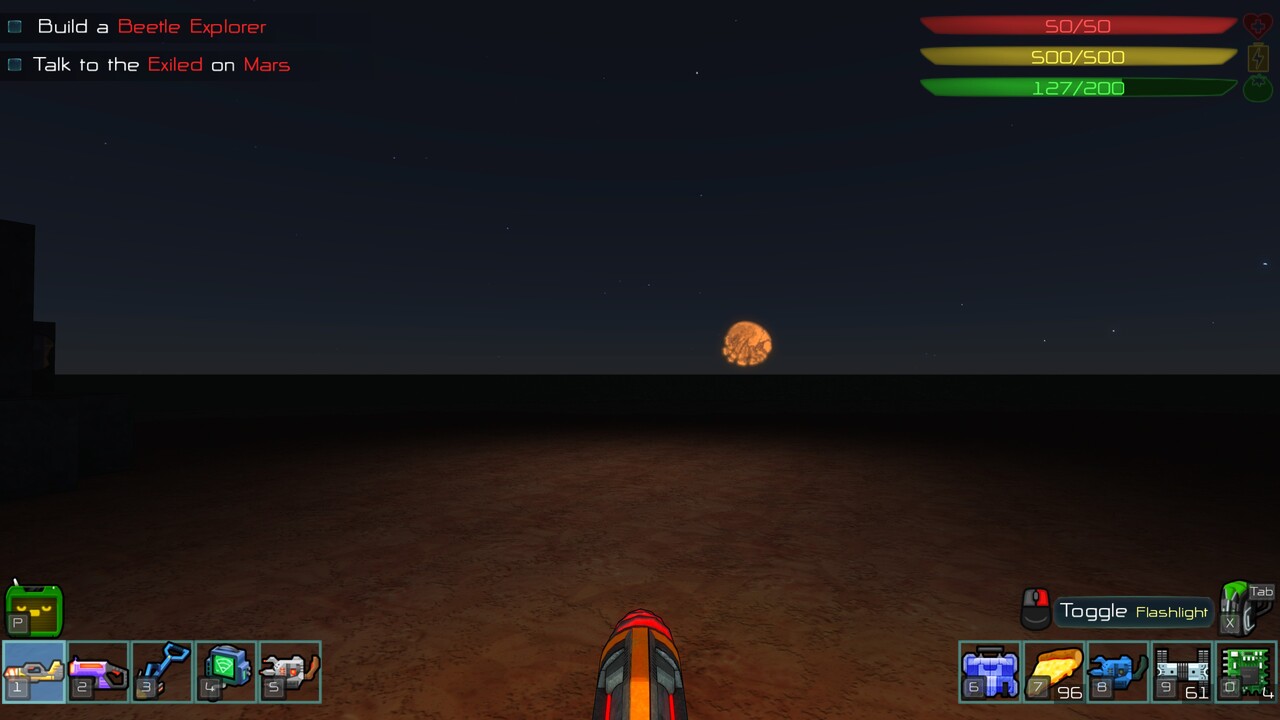
There are a couple of quests here and there, but anything you need you will probably have it on Earth, on your spaceship, or you can create with your portable tools.
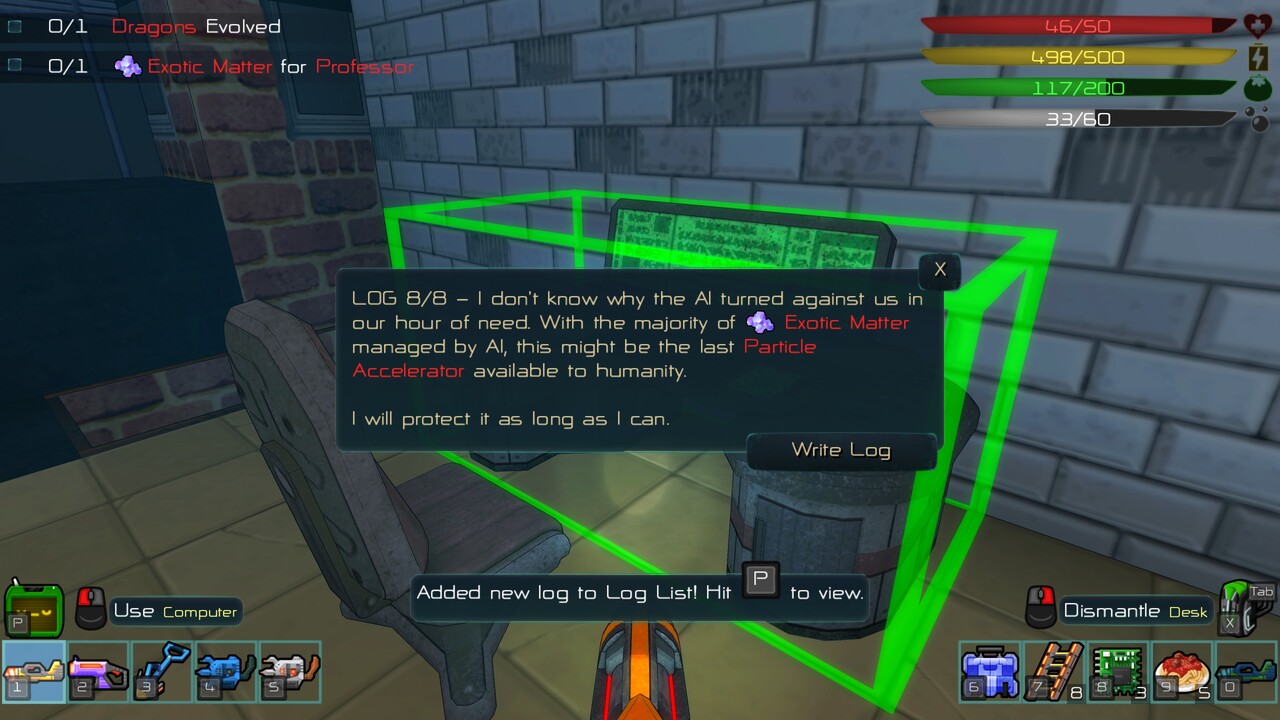
Besides everyone telling me how doomed the Earth is, it also seems like there is no need to leave it for good. I also could not find a way to “terraform” Earth.
They also try to introduce some new elements, but it is used so briefly that it made it seems like they were short on time to explore the idea further. Like terraforming Mars, and commanding space battles with multiple ships.
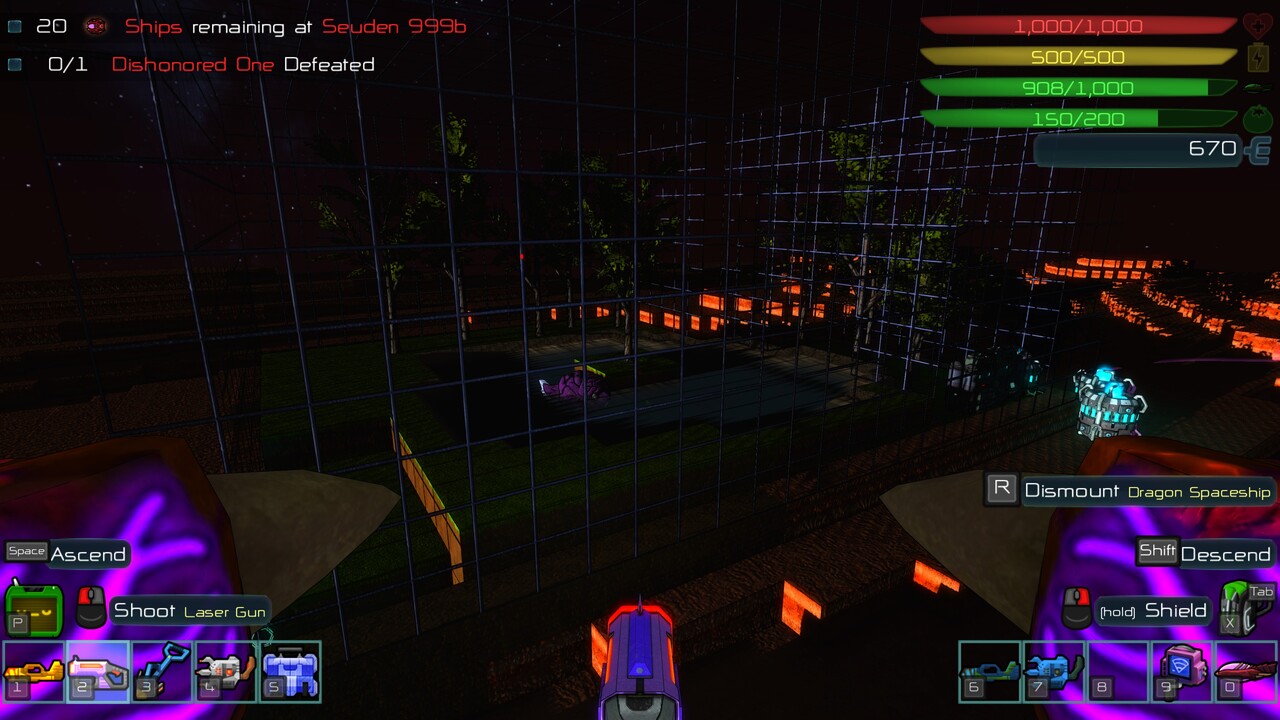
I was not familiar with the franchise, and when I was trying to learn more about the developers, it seems that many fans are a bit disappointed with the 3D instalment of the series, as it implements only a small fraction of the beloved 2D game Aground.
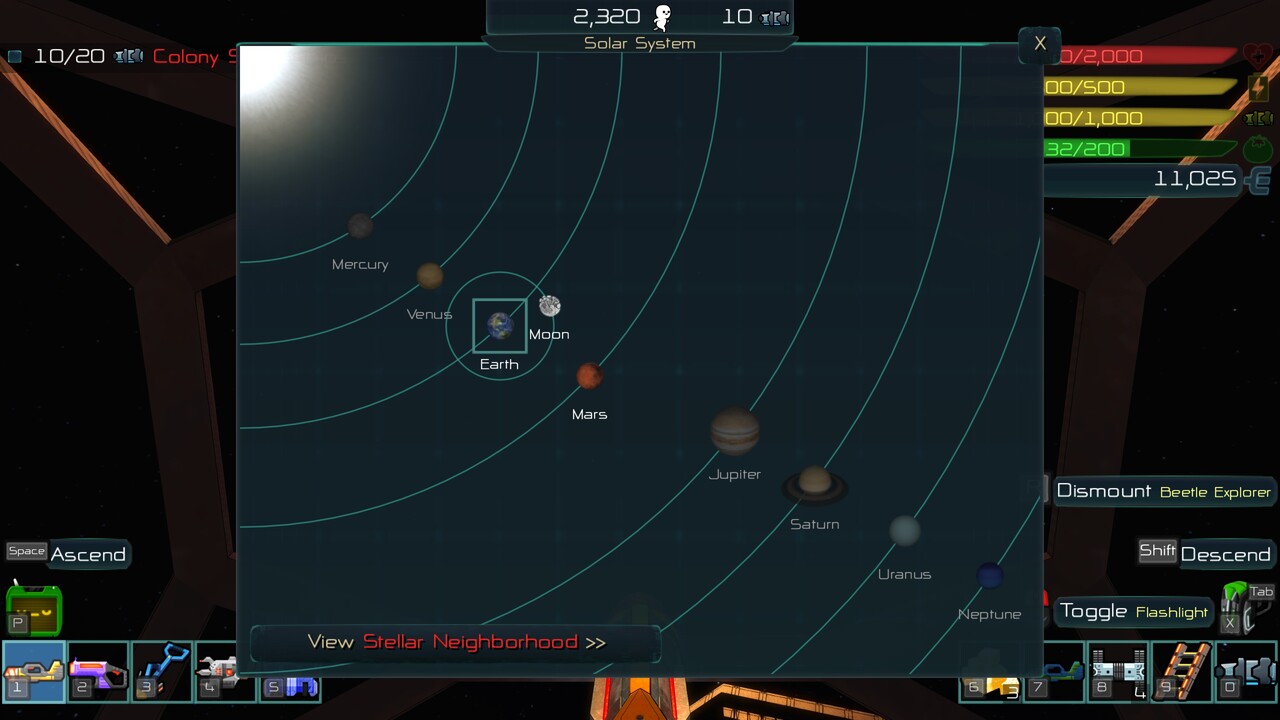
I played many “unfinished” games when they released, like Minecraft, Terraria, and No Man’s Sky, but even in their first version I had some fun. With No Man’s Sky for example, I played 100 hours before the first patch, I enjoyed exploring planets, scanning 100% of its life, and leaning new words of the alien language. I did not know there was a main quest, and that it was broken, I was just roaming around freely and having fun.
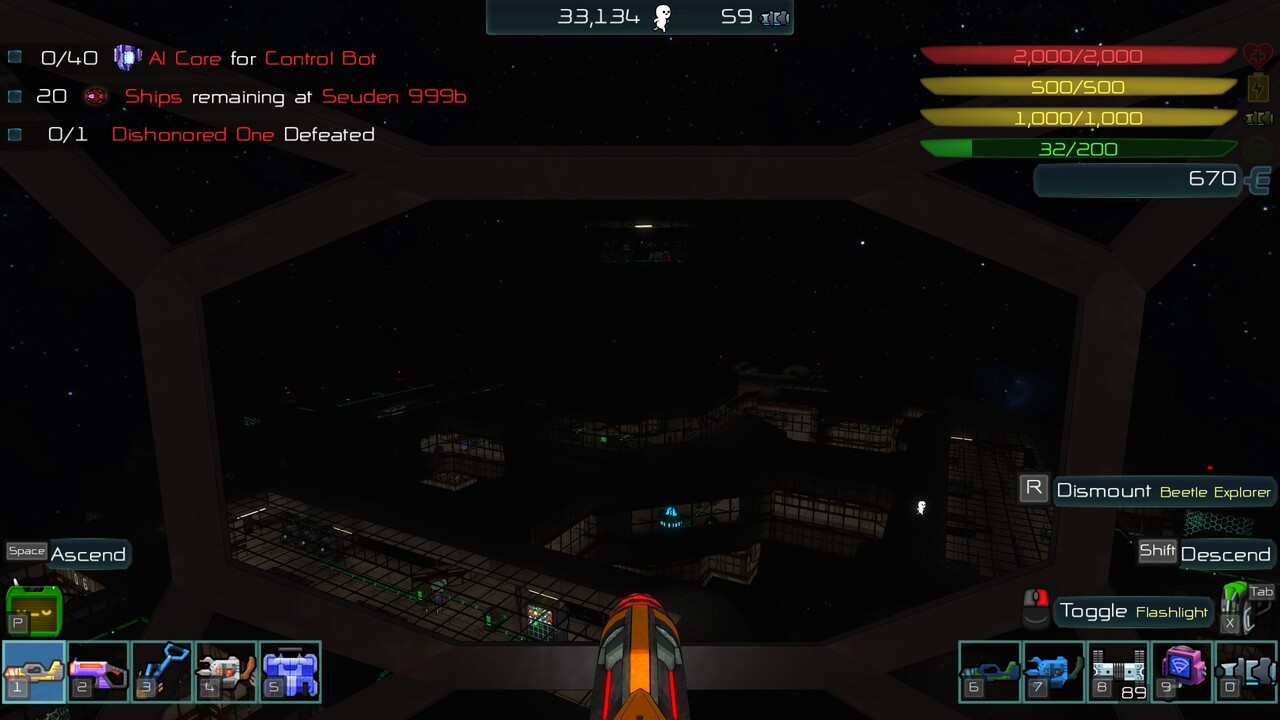
The same was with Aground Zero, I had fun building the factories, streamlining everything, exploring, meeting people, and terraforming Mars. Then you hit a point that you feel like a lot is missing.
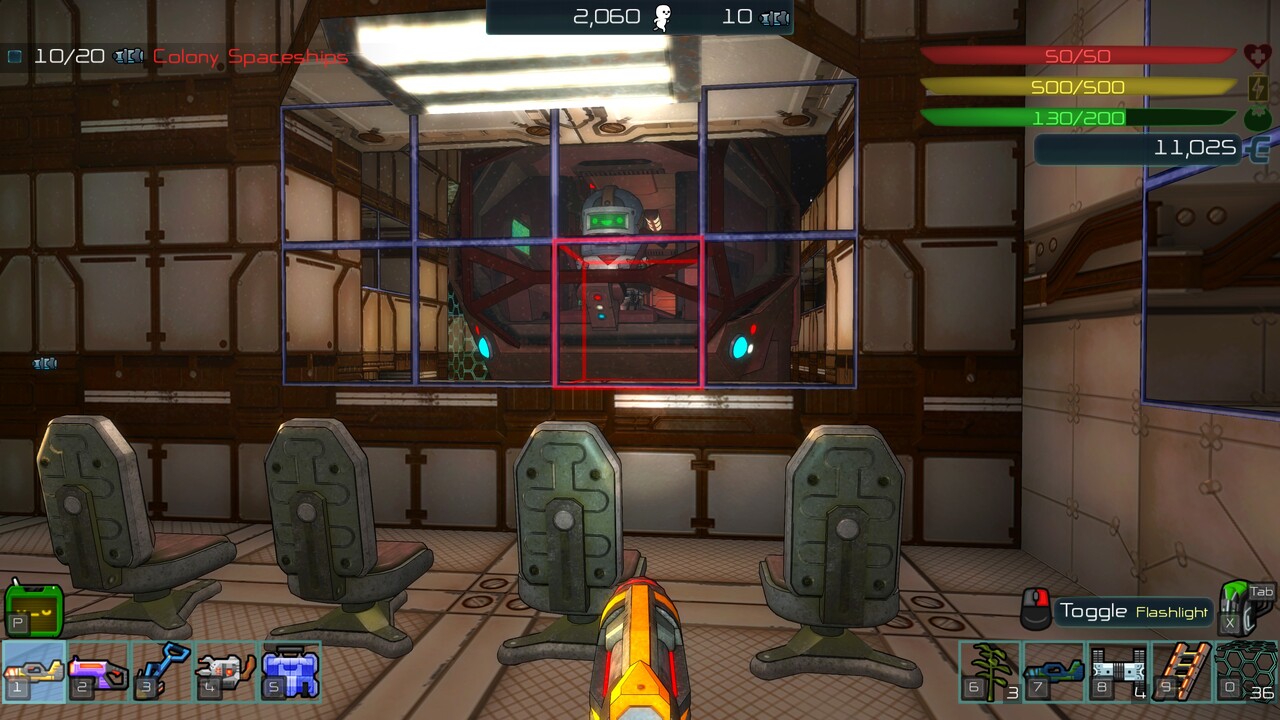
Hopefully, Aground Zero will be similar to those franchises that added much value patch after patch. The hope is a little higher in this case, because it’s already an established franchise. The devs already know what made the first one popular.
Steam Deck
Aground Zero is Steam Deck Verified.
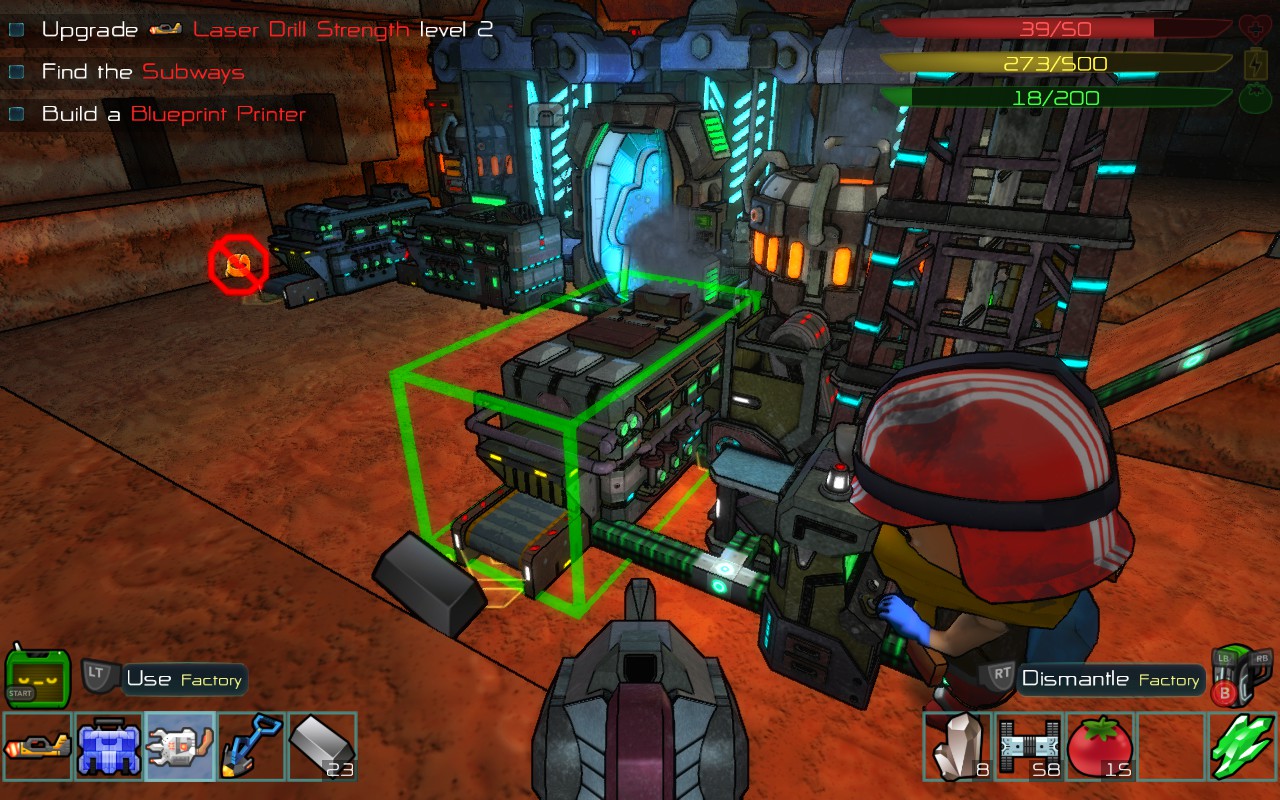
I played this game mostly on my Steam Deck, and it was quite enjoyable with the controller. Most tools are context-sensitive and very generous with targeting. You get an outline when you point to things, and what each button will do when you press it, from managing a structure to destroying a block.
The weapon is a bit different, and you need to target it properly to get a hit, a problem with smaller targets. It would be better if it were consistent with the other tools and be context-sensitive with the outlines.
| High Settings | Low Settings |
|---|---|
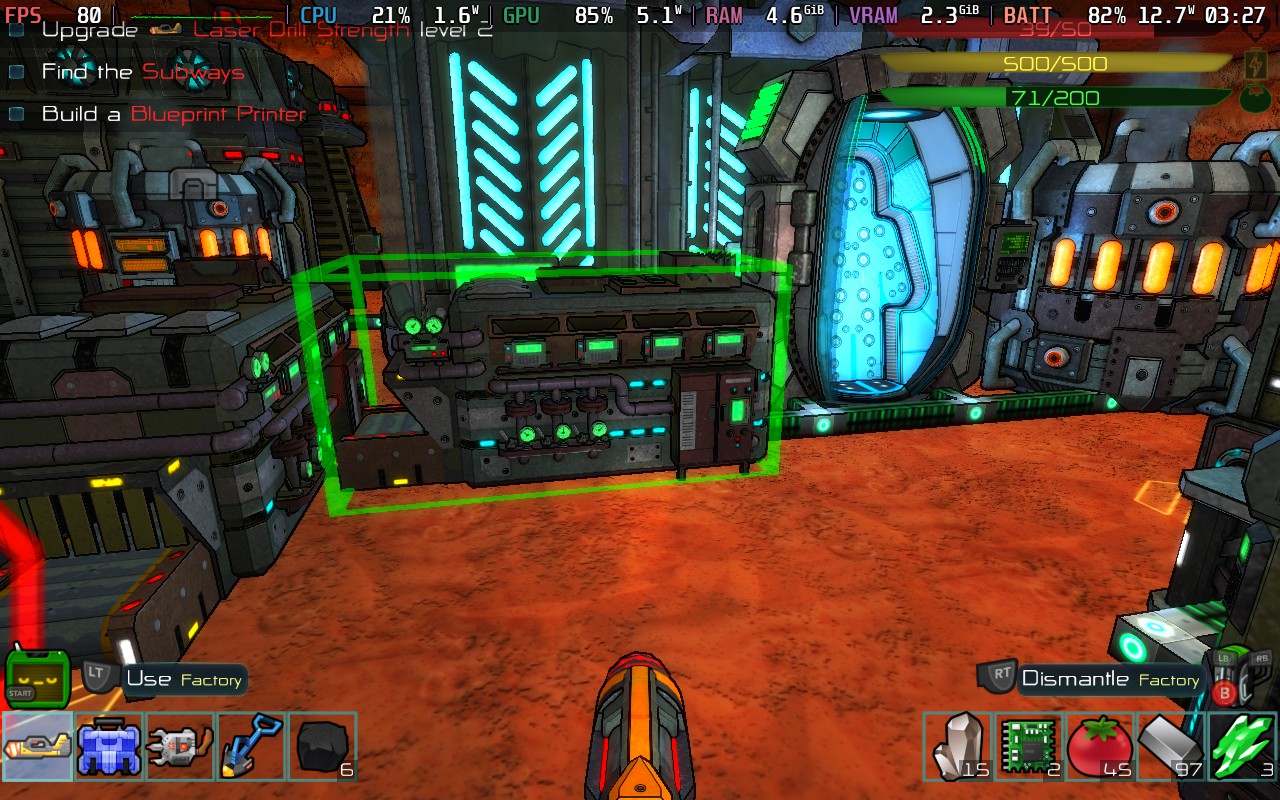 |
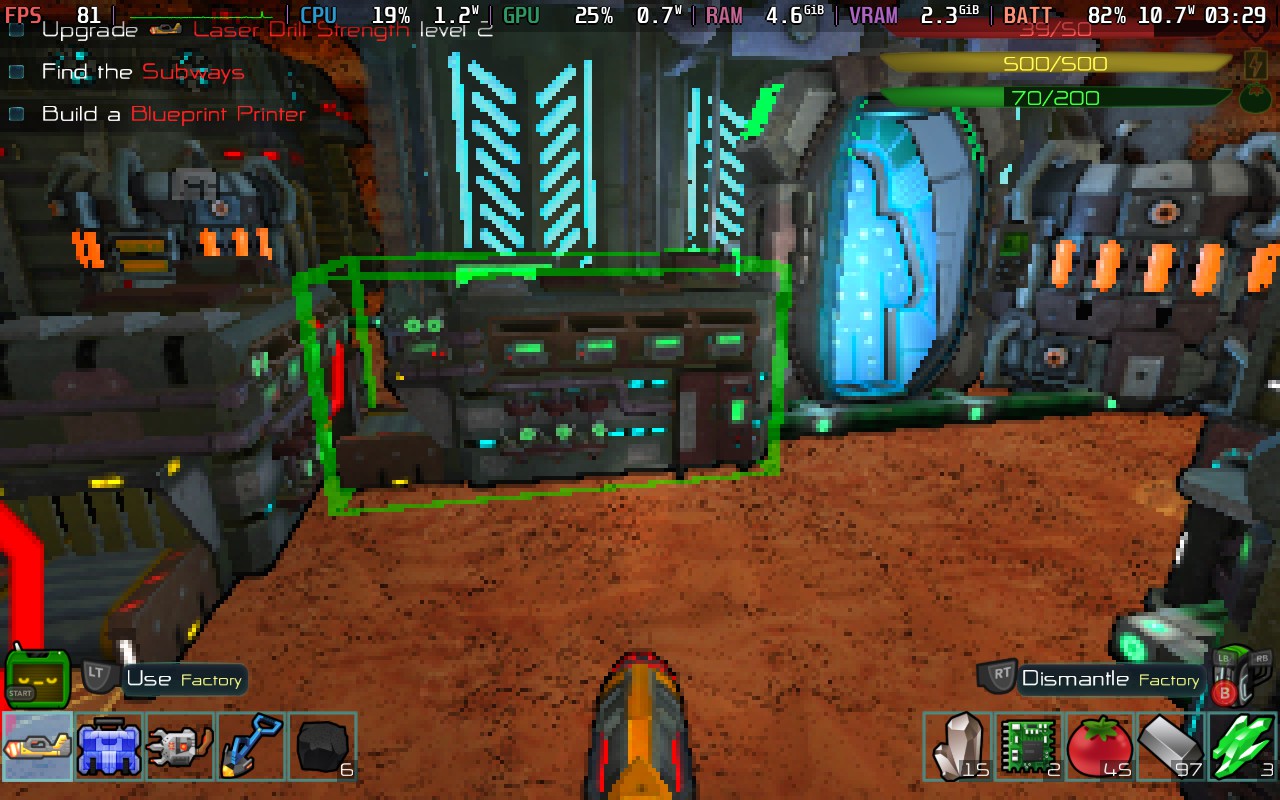 |
Performance was good, 90 FPS without problems. The battery drain was about 15W with the highest settings, and 7W with the lowest.
The save syncs between the computer and Steam Deck.
Aground Zero was under my radar, but I am glad that I got to test it. I liked how simplified “factory” building is, making tweaking it an almost zen experience. The game also respects my time, on both progress and ability to stop playing at any moment. And it was fun playing with fantasy elements in what is seems to be a sci-fi game - Shooting spaceships with a dragon? Count me in! - I hope the devs find the right balance to make it as cherished as its predecessor.
Aground Zero is available on Steam.
Note: We were provided a game key by the developers.
